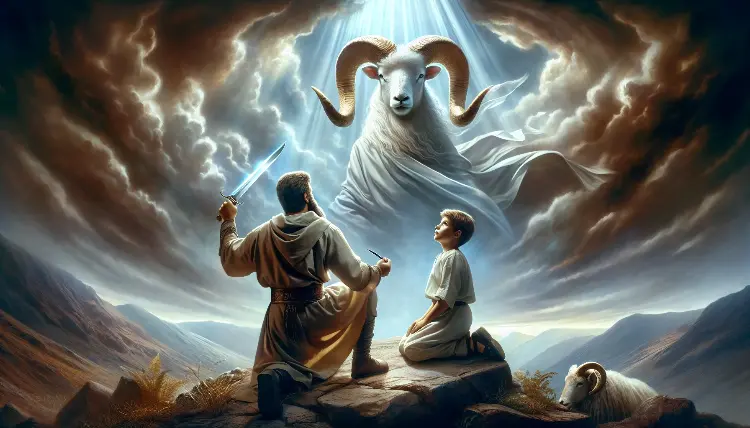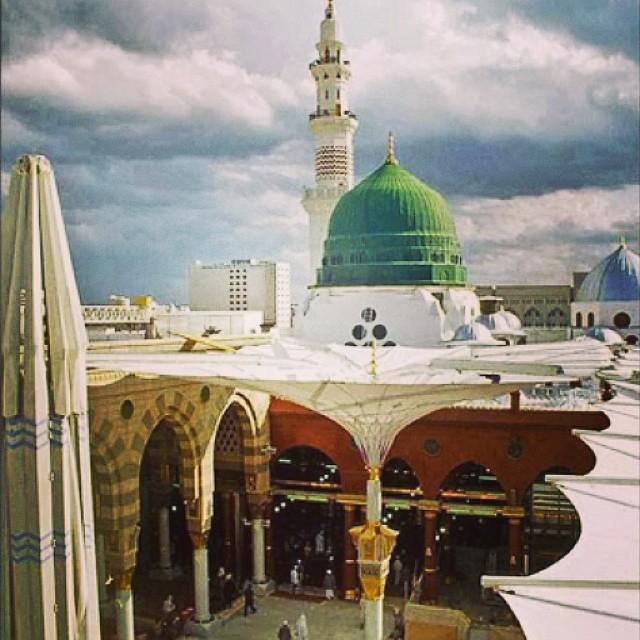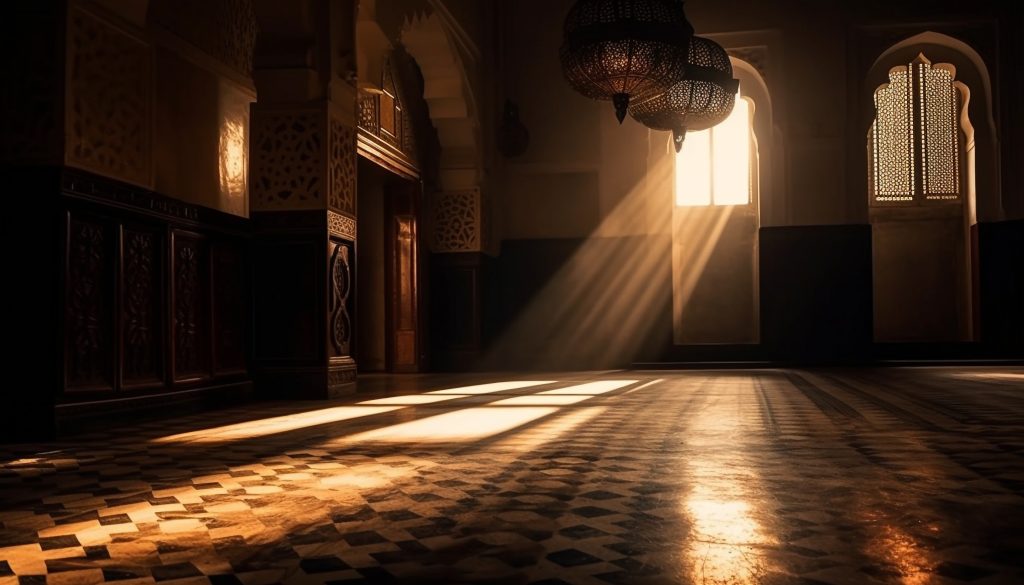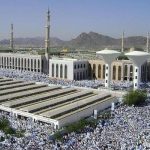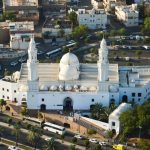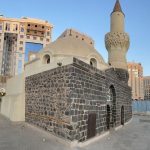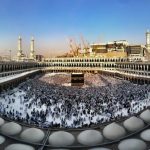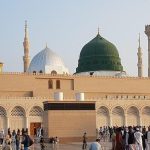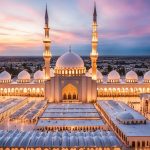Introduction: Celebrating Eid al-Adha with Umrah International
At Umrah International, we understand that Eid al-Adha represents more than just a holiday; it’s a profound expression of faith, sacrifice, and community. As you prepare for this significant occasion, we are dedicated to providing you with the support and services necessary for a fulfilling spiritual experience. This comprehensive guide will explore the rich traditions, history, and celebrations surrounding Eid al-Adha, ensuring you gain a deeper understanding of its significance.
1. The Essence of Eid al-Adha: A Symbol of Faith and Sacrifice
Unveiling the Significance of the Festival
Eid al-Adha, known as “the Greater Eid,” commemorates the unwavering faith of Prophet Ibrahim (Abraham). This holiday honors his willingness to sacrifice his son Ismail (Ishmael) in obedience to Allah’s command. However, before the act could be completed, Allah provided a ram to sacrifice instead, symbolizing mercy and divine intervention.
The Historical Context: Roots in Tradition
The historical significance of Eid al-Adha is rooted in the biblical and Quranic narratives surrounding Ibrahim’s faith. This festival serves as a reminder of the importance of trust in Allah and the readiness to make sacrifices for one’s beliefs.
2. Determining the Date: Understanding the Islamic Calendar
The Lunar Calendar and Its Implications
Eid al-Adha occurs on the 10th day of Dhu al-Hijjah, the last month of the Islamic lunar calendar. Due to the lunar calendar’s nature, the date shifts approximately 11 days earlier each year in the Gregorian calendar. This year, for instance, Eid al-Adha is expected to be celebrated in the summer, highlighting its varying seasonal contexts.
Aligning with Hajj: A Spiritual Journey
The timing of Eid al-Adha also coincides with the Hajj pilgrimage, a fundamental aspect of Islamic faith. Pilgrims in Mecca engage in sacred rituals, reinforcing the connection between the holiday and the spiritual journey of Hajj.
3. The Celebration of Eid al-Adha: Rituals and Practices
The Special Eid Prayer: Uniting in Worship
The celebration begins with a communal prayer, the Eid prayer, which occurs in mosques and open fields from dawn until just before Zuhr (noon) prayer. This gathering emphasizes the unity of the Muslim community and the collective expression of faith.
The Act of Sacrifice: Rituals of Qurbani
Central to the Eid al-Adha celebration is the act of Qurbani, or ritual sacrifice. Families select a livestock animal, such as a goat, sheep, cow, or camel, symbolizing their devotion and gratitude. This practice embodies the spirit of sacrifice, mirroring Ibrahim’s willingness to submit to divine will.
4. Festive Atmosphere: Traditions and Joy
Adorning for the Occasion: New Attire and Festive Wear
As part of the celebration, families often wear new or special clothing, symbolizing renewal and joy. This custom reflects the festive spirit of Eid al-Adha and the importance of presenting oneself well during communal gatherings.
Sharing Joy: Gifts and Greetings
Eid al-Adha is a time for exchanging gifts and heartfelt greetings. Phrases such as “Eid Mubarak” resonate throughout communities, fostering a sense of happiness and goodwill. Families and friends come together to celebrate, share meals, and express gratitude.
5. The Legacy of Ibrahim: Lessons from the Past
The Story of Sacrifice: A Moral Compass
The tale of Ibrahim’s willingness to sacrifice Ismail is not merely a historical account; it serves as a moral compass for Muslims today. The themes of obedience, trust, and sacrifice continue to resonate, reminding believers of the importance of faith.
The Role of Hajj: Pilgrimage as a Culmination
Eid al-Adha marks the culmination of the Hajj pilgrimage, symbolizing the interconnectedness of faith and community. The shared experiences of millions of pilgrims reinforce the importance of sacrifice and devotion.
6. Charity and Community: The Pillar of Zakat
Zakat: A Pillar of Islam
Eid al-Adha emphasizes the significance of zakat, or charity. As families perform Qurbani, they are reminded of their responsibility to support those in need. This act of giving not only nurtures community bonds but also reflects the core values of compassion and social justice.
Distributing the Meat: A Collective Effort
The meat from the sacrificed animal is typically divided into three parts: one-third for the family, one-third for friends and neighbors, and one-third for the less fortunate. This practice embodies the spirit of generosity and reinforces social ties within the community.
7. Global Celebrations: Eid al-Adha Around the World
Unique Customs and Traditions
Eid al-Adha is celebrated in diverse ways across the globe. In regions such as Indonesia, Turkey, and Nigeria, unique local customs and culinary delights enhance the festive atmosphere, showcasing the cultural richness of the Muslim community.
Family Reunions: A Time for Togetherness
For many, Eid al-Adha serves as an opportunity for family reunions. Families often travel great distances to share in the celebrations, reinforcing familial bonds and cultural traditions.
8. Preparing for Eid al-Adha: Tips for a Memorable Celebration
Spiritual Preparation: Engaging in Reflection
As Eid al-Adha approaches, individuals are encouraged to prepare spiritually. Engaging in prayer, reflection, and acts of kindness can enrich the overall experience of the holiday and deepen one’s connection to faith.
Practical Arrangements: Organizing for Success
From purchasing the sacrificial animal to planning meals and gatherings, practical preparations play a vital role in ensuring a smooth celebration. Being organized allows families to focus on the spiritual significance of the occasion.
9. Women’s Role in Eid al-Adha Celebrations
Empowerment and Active Participation
Women play an essential role in Eid al-Adha festivities, contributing significantly to family preparations, cooking, and organizing communal gatherings. Their involvement enhances the joy and inclusivity of the celebrations.
Passing Down Traditions: A Cultural Legacy
Many Eid traditions, including culinary recipes and festive customs, are passed down through generations. This cultural continuity strengthens familial bonds and deepens the community’s connection to their heritage.
10. Spiritual Reflection: Lessons Learned from Eid al-Adha
Embracing Sacrifice and Faith
Eid al-Adha encourages reflection on the themes of sacrifice and faith. The holiday serves as a reminder to remain steadfast in one’s beliefs and to appreciate life’s blessings, reinforcing the importance of gratitude.
Strengthening Community Connections
The collective celebration of Eid al-Adha fosters a sense of belonging within the Muslim community. By coming together in prayer, sacrifice, and feasting, individuals reinforce their commitment to their faith and to one another.
11. The Role of Education: Teaching the Significance of Eid al-Adha
Educating the Next Generation
It is crucial to instill an understanding of Eid al-Adha’s significance in younger generations. Teaching children about the story of Ibrahim and the values of sacrifice, charity, and community can deepen their appreciation for the holiday.
Utilizing Community Resources
Community centers, mosques, and educational programs play a pivotal role in disseminating knowledge about Eid al-Adha. Engaging children in activities related to the holiday can help foster a sense of belonging and pride in their identity.
Conclusion:
As you prepare to celebrate Eid al-Adha, Umrah International is here to support you in your spiritual journey. Our dedicated services ensure that you can focus on the essence of this remarkable holiday—faith, sacrifice, and community. From providing guidance on rituals to assisting with travel arrangements, we are committed to making your Eid celebration meaningful and memorable. May this Eid bring joy, blessings, and unity to you and your loved ones.

